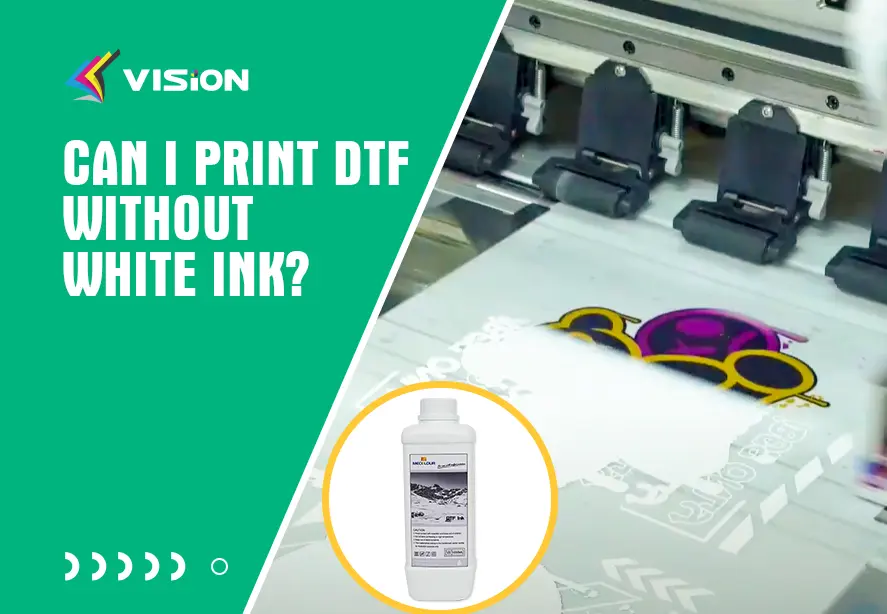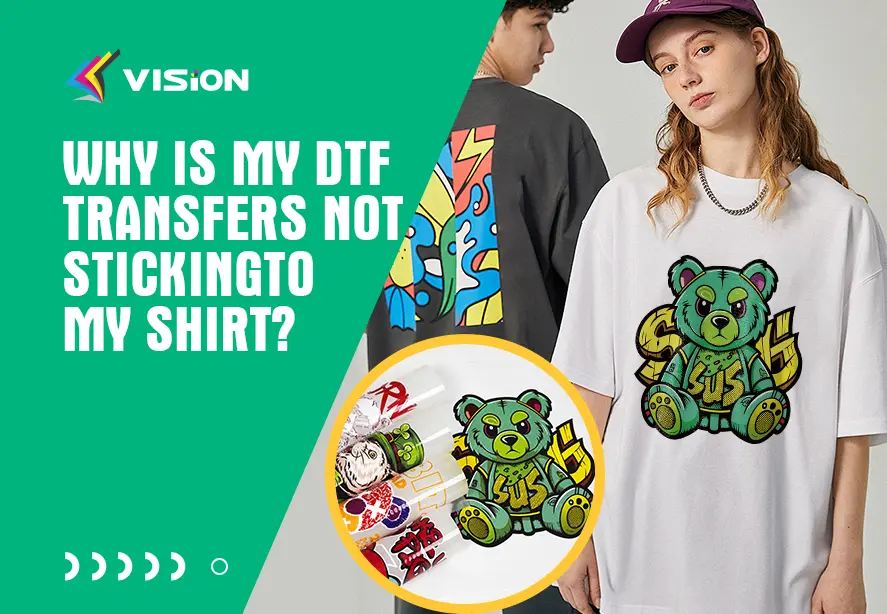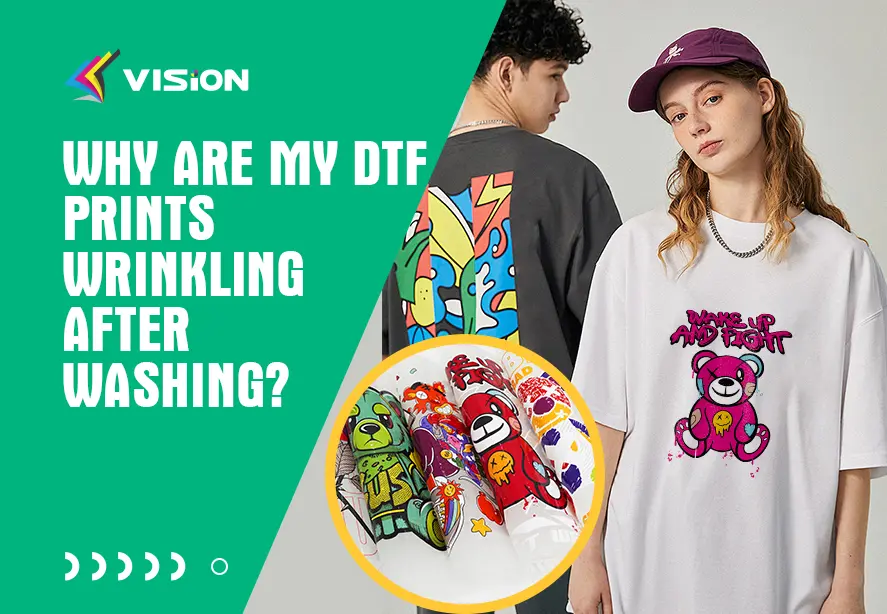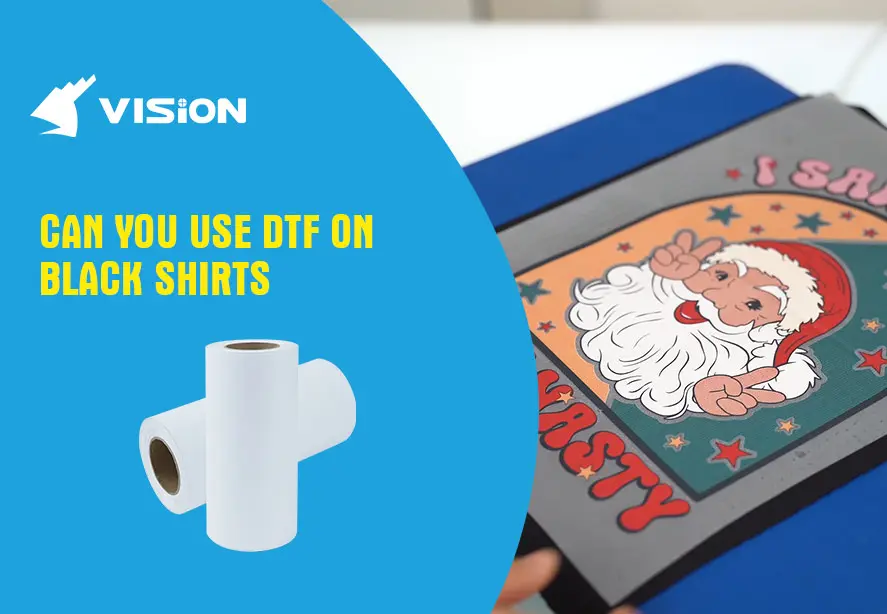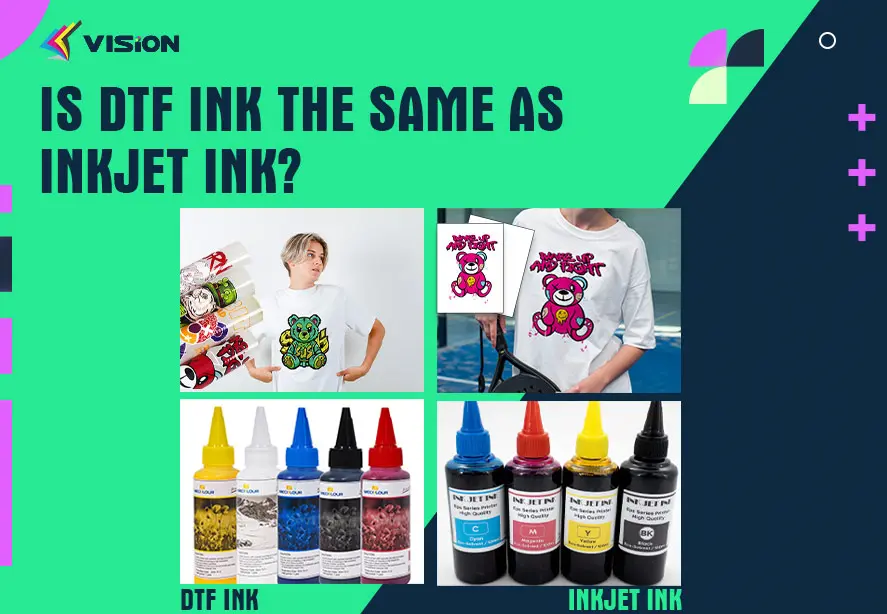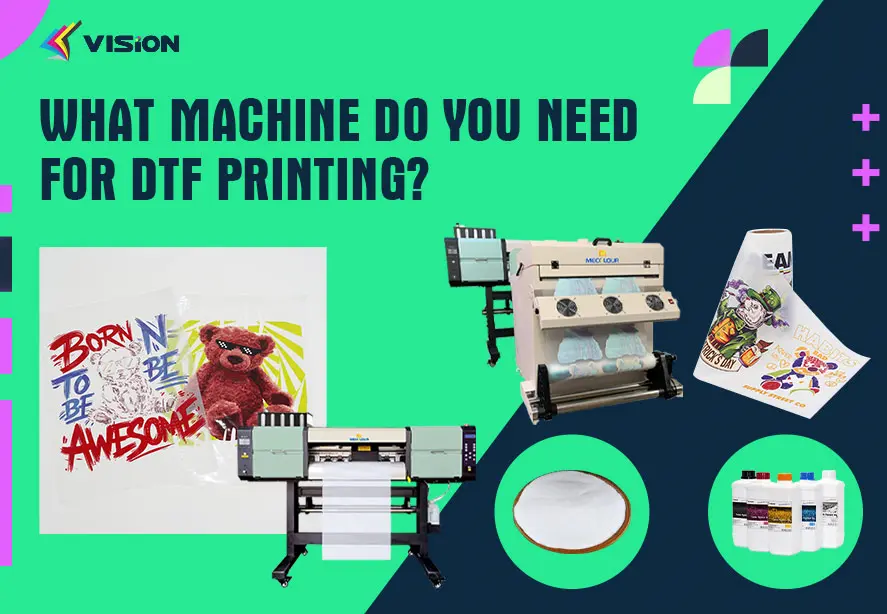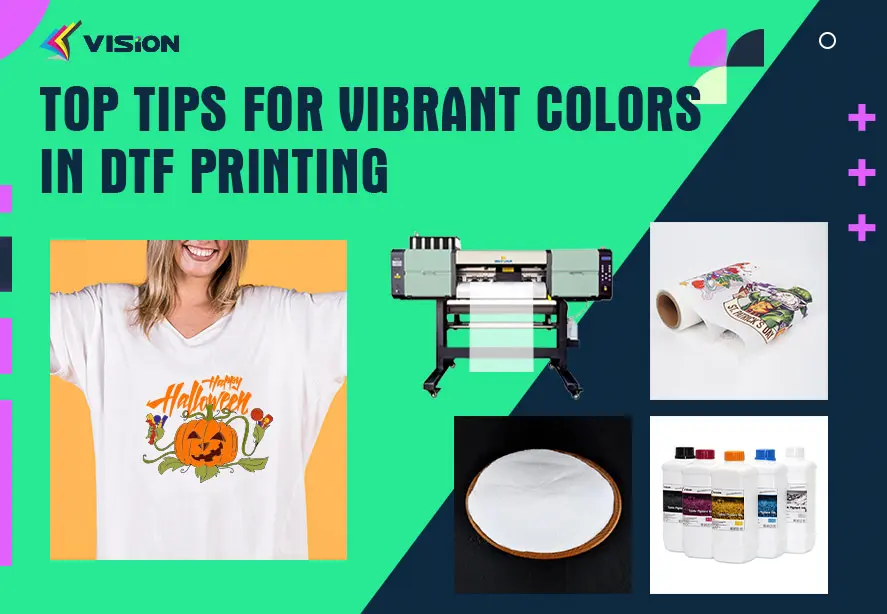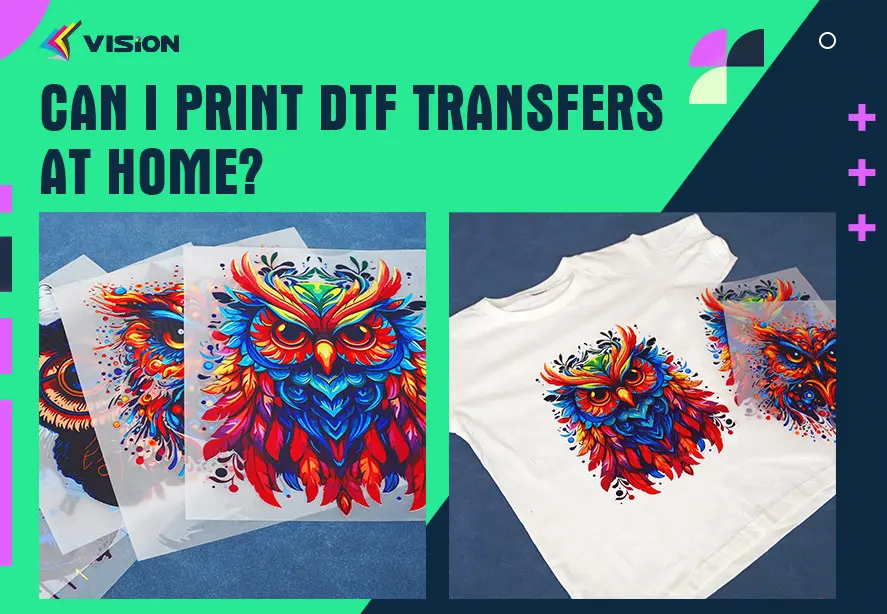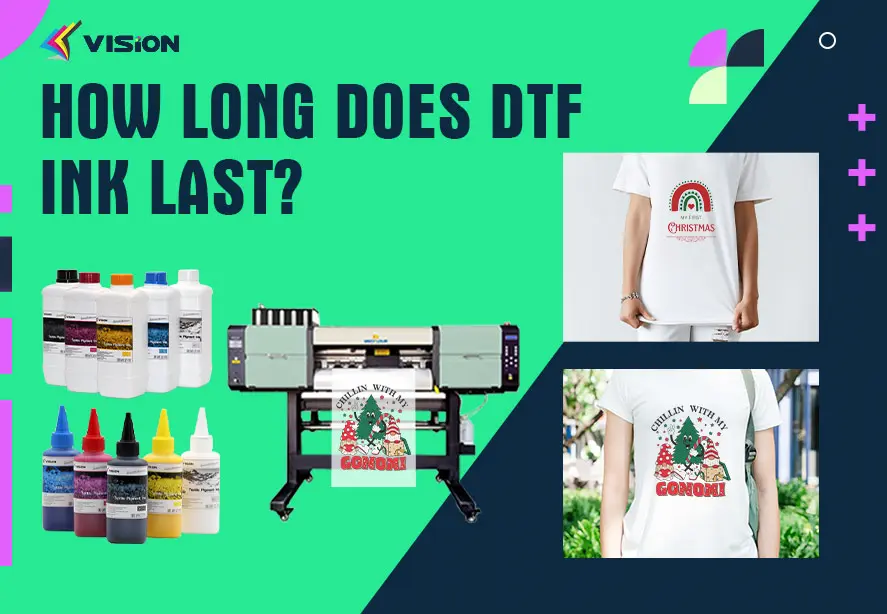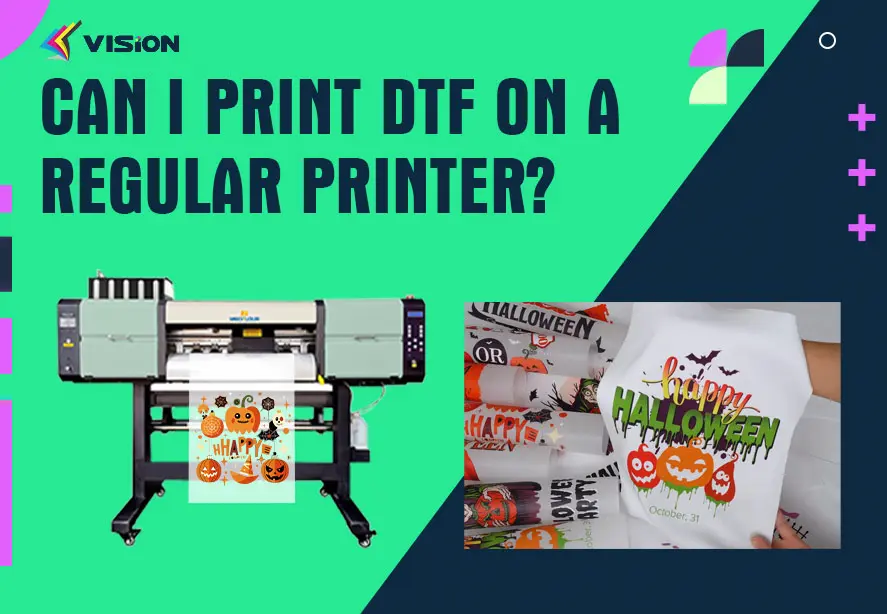The DTF printing process,vision tell you in details!

In contemporary society,the printing technology is witnessing rapid growth, with more and more enterprises moving to DTF printing industry.So we should learn how the DTF work and the printing process.
What is DTF printing process?
DTF printing is a process that transfers prints onto fabric or other substrates using a heat-press mechanism. DTF printing can be used on cotton fabrics, the Printer DTF method can apply on cotton and poly blends.Next,we will introduce you the process of DTF printing.
So first you’ll need to produce your graphic and get ready to print. There are really no graphical requirements to create a DTF print.
1.Print your design on the Film
Insert the PET film in the printer trays.
click Print button.
The inkjet printer will print “direct to film”, transferring the image onto your PET film.
Please attention not to smudge the print when you remove it from the tray!
2.Spread the DTF Powder
This step is the application of hot-melt powder on the film that has the printed image on it.You should sprinkle the powder while the print is still wet!
Make sure and spread the powder evenly.
Normally you should keep a tray close to the printer, sprinkle the power onto the web print, then turn back and forth until it covers the wet ink. Then shake off the excess carefully.
Maybe you can use automated shakers available for busier custom t-shirt shops.
3.Melt the Powder
You must actually melt the powder in place in this step.
The most common method to do this is just to put the direct to film DTF transfer in an oven for about 2 minutes.
Alternatively, if you’re already in the custom t-shirt business doing DTG or vinyl or white toner printer transfers you can use your heat press. Just make sure you are hovering and not applying any pressure. Or that the top of the press isn’t in contact with the transfer at all.
4.Pre-Press the T-Shirt
It doesn’t have to be a t-shirt of course. But whatever you’re going to apply your DTF transfer to should be completely smooth. Any wrinkles will show up in the print!
And maybe it is more importantly to dry the material completely. You’d be surprised how much moisture fabric can absorb from humidity in the air, and that would affect print quality.
5.Apply the DTF Transfer
Once you’ve made a direct to film transfer you do NOT need to use it right away. Like most other kinds of transfers, they store well. That’s why so many small businesses focus on just selling the transfers themselves!
If you are wondering which DTF printer to buy? Please view vision DTF printer product in details.
The PET film with the image and the melted powder is placed on the pre-pressed material in the heat press. You’ll then heat press the transfer onto the shirt.
6.Peel off DTF Transfer
DTF uses a COLD or HOT PEEL. 100% of the time.
When complete pressing onto a shirt, let it aside until the fabric and transfer are completely cooled off.
If you are making a series of shirts you can just press them one after the other, and then start peeling when they are all cooled off.
The hot-melt as it cools down acts as a binder that bind the colored pigment in the inks with the fibers of the fabric.After the film is cooled, peel off the transfer and leave the designs you need!
7.Direct to Film Finishing Press
This step is optional, but you should definitely do it on every garment application.
Normally, you’re just investing about 10 to 15 more second for this final step.
DTF is a good alternative when starting off in business due to its lower level of investment for a stand alone version or a fully automated system for mass production transfers.It produces a pretty amazing transfer. You can apply it to almost any fabric!
If you have any questions about DTF printing,please tell us.
Contact us:
Whatsapp: +86-18001836806
E-mail: info@visionsub.com


